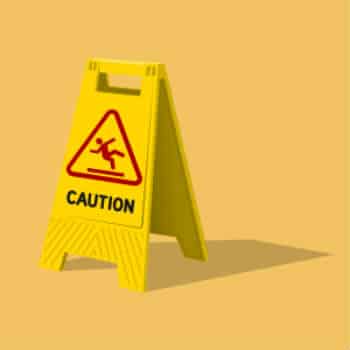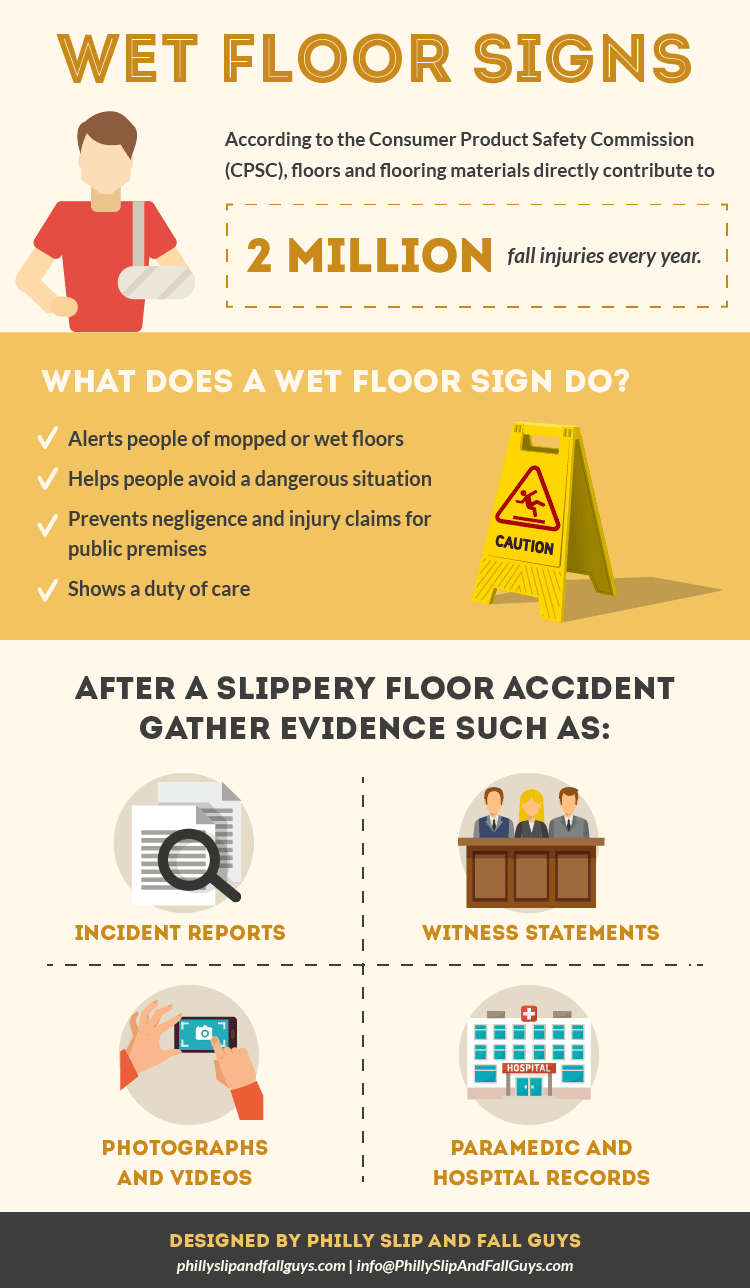Wet Floor Signs: What is the Liability?
Businesses and establishments have a legal and ethical responsibility to do “due diligence” to protect their customers and visitors from injury or harm. This does not mean that they have to watch people every minute and warn them of any impending dangers. But what is the responsibility of a business or public entity regarding such issues?
In a nutshell, public establishments have the trust of the public in general, so they are responsible for the safety
Putting Up A Sign
While there is no clear cut answer to whether a public place will be found liable for such claims, here are a few questions/guidelines to go by to use as a test to see if you may be entitled to damages resulting from a fall which occurred where no sign was up.
- Was there any way to tell that the floor was wet without the sign? For example, was it in an area where the custodian was still finishing the job where it was obvious that the floor was wet?
- Was there a verbal warning issued? Did the custodian, an office manager, or anyone else in the area offer a suggestion to be careful or go around due to the wet area?
- Did the person who fell engage in any careless or reckless behavior or activity which resulted in the fall? The courts will look at causation as the main litmus test to see whether damages should be awarded.
- Was there an obvious means by which the owners of the location could have prevented the fall by some means other than putting up a sign, such as creating an alternate path for traffic?
- Would a person of ordinary intelligence and common sense know to avoid the area due to the situation without a sign being placed?
- Does this particular company or location normally put a sign up when there is a wet floor? Why was there no sign up in this instance?
- Who caused the wet floor? Was it a spill caused by another visitor to the location or was it created by mopping or maintenance of the facility, etc.?
- Did the fall result in damage or injury that cost you money or pain and suffering?

Share this Image On Your Site
Legal Explanations
In all of these examples, you can see how a court would generally rationalize the situations. If there was a way that a rational person could have known the floor was wet without a sign, then the business may not be liable for damages. Also, the sign itself is not always the issue. Was there another way they used to warn of the dangers before the fall? Did the person who was warned then engage in reckless behavior, such as dancing around on the wet floor which may have resulting in the fall itself, more than the wet floor? And most importantly, was there any way the business or entity could have prevented the accident by some means, either a wet floor sign or a verbal warning? Finally, what was the extent of the injury or damage to persons or property? It is likely you will get a larger reward if your injuries are extensive, rather than minor.
In A Nutshell
The law is not exact, especially when it comes to cases of civil liability. The courts generally rule that if something could have been prevented and it was not, it constitutes negligence. This can result in an award for the plaintiff. But if the accident was NOT caused by the lack of a sign, such as from self-endangerment, the courts will often rule for the defendant.
While there is no way to know what the outcome will be, if you believe someone was negligent or that you were not properly warned about the situation, you may be eligible for damages.